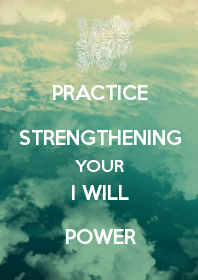
Wouldn’t it be nice if you could simply get rid of your belly fat with a few crunches and ab work? After all, wouldn’t all that hard work melt the fat away if you really put your heart into it?
It’s easy to fall into the trap of wanting a quick fix, but in reality, it takes a host of healthy habits to successfully manage outcomes like a flat belly. A study published in The Journal of Strength and Conditioning Research investigating the effect of six weeks of abdominal exercises on abdominal fat showed that exercise alone didn’t change waistline stubborn fat, or other measures of body composition. Nevertheless, core-conditioning exercises build important strength and endurance of these muscles.
It’s well known that obesity has significantly increased in most industrialized nations over the past 20 years, and abdominal fat is linked to various diseases such as heart disease and type two diabetes. The increased levels of deep visceral fat can lead to metabolic complications such as insulin resistance, glucose intolerance and high cholesterol levels.
The Journal of Strength and Conditioning Research study questioned whether or not abdominal exercises alone support the notion of “spot reduction.” Do they affect abdominal fat, waist circumference and abdominal strength? Twenty-four sedentary young, majority male (58 percent) participants were randomly assigned to an abdominal exercise group or a control group. The exercise group performed seven abdominal exercises, each with two sets of 10 repetitions, five days a week, for six weeks. For these participants, including a five-minute warm-up on a treadmill, the total exercise session time was approximately 15 minutes.
The control group maintained their normal activities and diet.
During the first week, all participants were monitored so that proper exercise form could be taught and subsequently logged. The exercises were Bent Knee Sit-Up, Lateral Trunk Flexion, Leg Lifts, Oblique Crunch, Stability Ball Crunch, and Abdominal Crunch.
The exercise group had significant improvements in abdominal muscle endurance, proving that strength increases with resistance training exercise. However, from an energy balance perspective, it’s not likely that a 15-minute exercise protocol for the ab muscles would create a sufficient energy deficit to change body fat percentage and abdominal fat percentage. Though this study was small, it is a good reminder that infomercials claiming flat abs in five or 15 minutes a day is wishful thinking.
What can help is regular exercise and progressive resistance training to reduce not only belly fat, but overall health as well. A 2016 study found that losing as little as 5 percent of body weight improved fat tissue, liver and muscle insulin sensitivity. Research shows that this approach—a moderate one, up to a 10 percent weight loss—can lead to better long-term outcomes. While societal pressure to be thin unfortunately overemphasizes weight loss, a realistic goal should focus on habits you can control, including physical activity, nutrition, sleep and stress management, as opposed to a magical spot reducing program.
Connie Aronson is an ACSM-certified exercise physiologist at the YMCA in Ketchum. Learn more at www.conniearonson.com.


